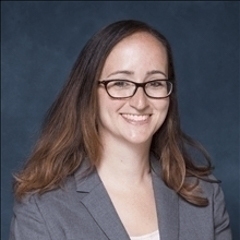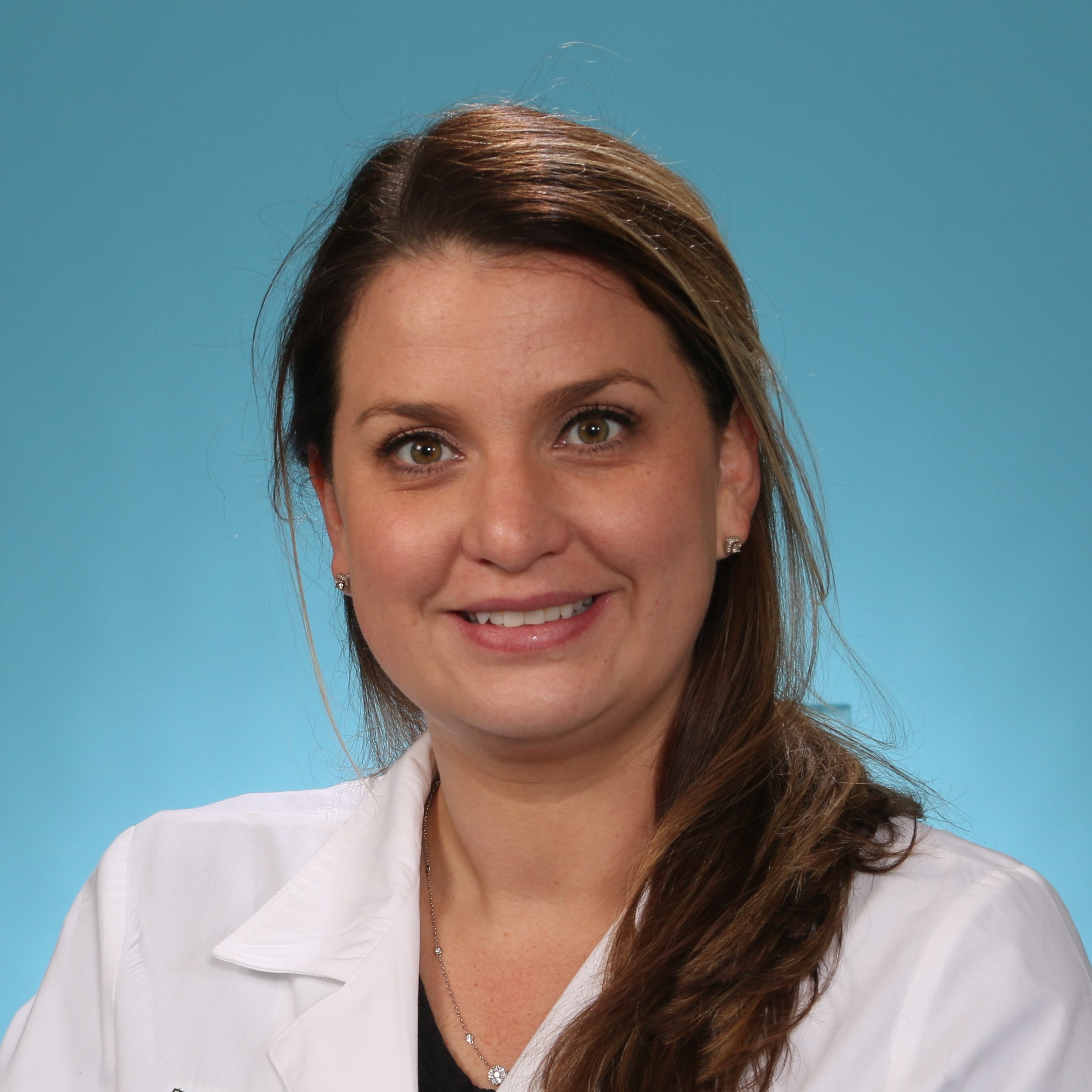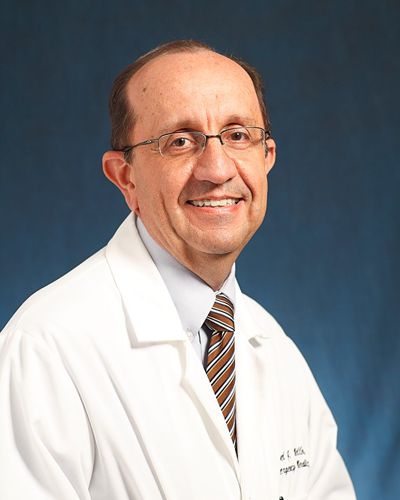Session Details
Assessing Injury Risk
Grand Salon A/B/C/D
2. To understand the epidemiology of pediatric drowning patients utilizing pre-hospital EMS data in the United States in 2019 and to identify patient-specific, incident-specific, and procedural intervention variables associated with critical illness following drowning.
3. To understand potential contributing risk factors and behaviors that lead to lawnmower injuries.
4. To examine the frequency with which adolescent trauma patients prescribed opioids at discharge received counseling about opioid safe usage and if this differed by adolescents having alcohol and drug use.
5. To understand the impact of laws on on-road ATV’s/UTV’s crashes.

Assistant Professor, Department of Surgery and Perioperative Care
Assistant Chief, Division of Pediatric Surgery
University of Texas at Austin, Dell Medical School

Associate Trauma Medical Director
Co-Director, Emergency Medical Services
St Louis Children’s Hospital
Washington University in St. Louis
Prehospital Predictors of Critical Illness in Pediatric Drowning in the United States

Division of Emergency Medicine
Director, Section on EMS and Prehospital Care
Boston Children's Hospital
300 Longwood Ave
Boston, MA 02115
caitlin.farrell@childrens.harvard.edu
Molly Greenshields, MD
Michael Monuteaux, ScD
Angelica Garcia MD, MPH
Kate Dorney, MD MSHPEd
Lois Lee, MD, MPH
Caitlin Farrell, MD
Drowning is the leading cause of injury related death for children 1-4 years old and the third most common cause of injury related death in youth 5-19 years old. Our objective was to describe the epidemiology of pediatric drowning patients utilizing pre-hospital EMS data in the United States in 2019 and to identify patient-specific, incident-specific, and procedural intervention variables associated with critical illness following drowning.
This was a national, cross-sectional study using the 2019 National Emergency Medical Services Information System (NEMSIS) database. Children < 19 years old (yo) with ICD 10 external cause of injury (E-codes) for drowning were included. Critical illness was defined as a recorded Glasgow Coma Scale (GCS) score < 8 or hypoxia <90 by EMS. Demographic and incident characteristics (e.g., season, drowning location) were compared between drowning patients with and without critical illness using Pearson chi square test or Fisher’s exact test. We performed multivariable logistic regression for the outcome of critical illness controlling for demographic and incident characteristics.
Our study sample included 1160 patients; 57% were children < 5 yo. Drowning occurred most in urban locations (87.6%), during the summer (46.4%), and in swimming pools (43.4%). Critically ill drowning patients comprised 344 (21.6%) of the study population with CPR performed in 61% and advanced airway management performed in 32%. A higher proportion of males compared to females had critical illness (p= 0.013). While the largest number of drownings occurred during summer, spring and fall had higher proportions of patients with critical illness (p =0.013). In the multivariable logistic regression model there were increased odds of critical illness in children 1-4 years compared to 13-19 years (OR 1.61, 95% CI 1.07, 2.44). Males had increased odds of critical illness (OR 1.47, 95% CI 1.11,1.95) in the multivariable logistic regression model. There was no statistically significant difference by U.S. region or drowning location.
Among children with drowning receiving EMS care, nearly one-quarter were critically ill with a GCS score < 8 or hypoxia <90. Younger children 1-4 years and males had increased odds of critical illness. Using national EMS data is novel in improving understanding of pediatric patients with drowning at risk for critical illness. This can inform injury prevention interventions and EMS preparedness.
1. Nearly one quarter of children evaluated by EMS after drowning were critically ill with GCS <8 or hypoxia <90
2. Children with increased odds of critical illness after drowning include males and children aged 1-4.
3. National EMS data allows for novel understanding of pediatric drowning.
A Survey Exploring Contributing Risk Factors for Pediatric Lawn Mower Injuries

Departments of Pediatrics and Emergency Medicine
University of Iowa Carver College of Medicine
Treyton Krupp, BS
Priyanka Vakkalanka, PhD
Charles Jennissen, MD
Riding lawn mowers are the third leading cause of pediatric amputations. Children <5 years of age are at greatest risk. We hypothesize that children who have riding lawn mower injuries as bystanders are often given rides on lawn mowers and other vehicles not meant to have passengers, thus making young children more likely to approach an operating mower. Our study’s aim was to investigate the circumstances surrounding pediatric riding lawn mower injuries to identify potential contributing risk factors and behaviors that lead to these events.
Followers and members of both a public and a private lawn mower injury support and prevention Facebook page who had or were aware of children who had suffered a serious riding lawn mower-related injury were invited to complete an electronic survey on Qualtrics. Questions addressed the circumstances, injuries, and behaviors before and at the time of the incident, including a history of prior recreational rides on lawn mowers or other vehicles. Duplicate cases were removed. Frequencies and chi-square analyses were completed with IBM SPSS Statistic Build 1.0.0.1327.
Surveys were completed on152 injured children. Approximately 70% were completed by a parent and about 20% by an adult survivor of a childhood incident. About 70% of respondents were from the South or Midwest census regions. The majority of injured children were Caucasian (94%), male (62%), and ?5 years of age at the time of the incident (82%). Bystanders were 69% of those injured, 24% were riders on the lawn mower, and mower operators and others were both ~4% each. Overall, bystanders were younger than other injured children with 88% vs. 69% being ?5 years of age, respectively (P=0.012). The highest proportion of incidents occurred in May and June (~40%) and approximately half occurred between 1-5pm. The lawn mower operator was male in approximately three-quarters of cases with a father/stepfather being the operator in half. Overall, 60% of injuries occurred while traveling backwards, and 30% while moving forward. Three-quarters (76%) of bystander incidents occurred while moving in reverse as compared to 17% of non-bystander incidents (P<0.0001). Overall, 90% had an amputation or permanent disability. Nearly all (95%) of injured bystanders had an amputation and/or permanent disability versus 78% of non-bystanders (P<0.05). Only 5% of bystander injuries occurred to the upper extremity as compared to 40% of non-bystanders (P<0.01). Over three-quarters of bystanders (77%) had received a ride on some type of work or recreational vehicle prior to their injury. One-half of bystander victims had received at least one ride on a lawn mower prior to their injury incident.
Child bystanders seriously injured by riding lawn mowers were frequently given prior rides on lawn mowers and other vehicles not meant to have child passengers. Engineering changes to prevent mower blade rotation when traveling in reverse and not giving children rides on lawn mowers (both when mowing and when not mowing) may be critical in preventing these serious injuries
1. Participants will be able to list at least three circumstances common in riding lawn mower incidents leading to serious injury, including amputation, in children.
2. They will be able to state at least two differences between riding lawn mower injuries involving child bystanders as compared to child passengers.
3. Attendees will be able to describe at least two interventions that may help decrease serious riding lawn mower injuries in children.
Opioid prescribing and counselling in hospitalized adolescent trauma patients

PI, Rhode Island Hospital Injury Control Center of Biomedical Research Excellence
Professor of Emergency Medicine, Warren Alpert Medical School of Brown University
Professor of Health Services, Policy and Practice, Brown University School of Public Health
michael.mello@brownphysicians.org
Michael J. Mello, MD, MPH, FACEP
Jeremy Aidlen, MD
Janette Baird, PhD
Sara Becker, PhD
Julie Bromberg, MPH
Emily Christison-Lagay, MD
Beth Ebel, MD, MPH
Andrew Kiragu, MD
Karla Lawson, PhD
Lois Lee, MD, MPH
Robert Todd Maxson, MD
Isam Nasr, MD
Charles W. Pruitt, MD
Stephanie Ruest, MD, MPH
Kelli Scott, PhD
Anthony Spirito, PhD
Mark Zonfrillo, MD, MSCE
In 2017, 17% of adolescents reported any opioid use and of those using opioid 18% reported misuse (1). We have previously reported variability in opioid prescribing to adolescent patients at pediatric trauma centers (2). This presentation examined the frequency with which adolescent trauma patients prescribed opioids at discharge received counselling about opioid safe usage and if this differed by adolescents having alcohol and drug (AOD) use.
This analysis was embedded within a larger prospective stepped-wedge trial that implemented AOD screening across a national cohort of pediatric trauma centers. Data were collected from adolescent trauma patients (12-17 yo) at nine study sites during the pre-implementation phase from 2018-2021. Patient data were extracted from the electronic health record (EHR) on any prescribed discharged opioids, documentation of counseling received about their prescribed opioid, who delivered counseling, and patients’ alcohol and drug screening results. Additionally, adolescents received an online survey within 30 days of their discharge that asked if a discussion on safe use of opioid medication occured during their hospital admission.
Of the 271 adolescent trauma patients enrolled during the pre-implementation phase, 153 completed the 30 day survey. The EHR identified 107 (69.9%) as male, mean age = 15.3 years (SD = 1.7), 70.5% as White, 14.1% as Black or African American, and 15% as Hispanic. AOD screen results were documented in the EHR for 138 patients (90.8%), with 67 (44.1%) screening AOD positive. Opioids at discharge were prescribed to 86 (56.2%) adolescent patients, with no significant difference between those screened AOD positive and AOD negative (42.4% vs. 46.3%, p = 0.89). Opioid counseling was documented in the EHR for 30 (34.9%) of those prescribed an opioid. Documented counseling was predominantly provided by a nurse (66.7%) or resident (23.3%): none of the documented opioid counseling was provided by social work, addiction medicine, psychology, or psychiatry. According to the adolescent survey, among those prescribed an opioid, 59.3% reported someone had talked with them about safe opioid administration. Among the AOD positive patients who were prescribed an opioid, 24 (66.7%) adolescents stated had a safe opioid use discussion compared to 22 (53.7%) of those AOD negative, (p = 0.33).
We found that more than half of hospitalized adolescent trauma patients were prescribed an opioid at discharge. Receipt of an opioid prescription and opioid counseling did not differ if adolescents had screened positive for AOD use. Although adolescents recalled discussions occurring more often than was documented, discussions were not universal, and content /quality of those discussions could not be determined. Future work should evaluate universal opioid safety counseling in pediatric trauma centers, particularly among youth screening positive for AOD. 1. Kelley-Quon LI, et al. Guidelines for Opioid Prescribing in Children and Adolescents After Surgery. JAMA Surg. Jan 1 2021;156(1):76-90. 2. Mello MJ, et al. Variability in Opioid Pain Medication Prescribing for Adolescent Trauma Patients in a Sample of US Pediatric Trauma Centers. BMJ Trauma Surgery & Acute Care Open. April 2022.
Attendees will:
1. Understand that opioid prescriptions are frequently prescribed at discharge to hospitalized adolescent trauma patients.
2. Identify that adolescents that screen positive for alcohol or drug use during admission need focused attention regarding opioid prescriptions.
3. Describe the need for universal substantive counseling around safe opioid use with adolescent trauma patients.
Identifying Unintentional Injury Risks Among Patients Visiting a Pediatric Urgent Care

Chief Resident, Pediatric Residency Program
elizabeth.lendrum@cchmc.org
Elizabeth C. Lendrum, MD
Kristen Peterson, MD
Mike A. Gittelman, MD
Melissa D. Klein, MD, MEd
Wendy J. Pomerantz, MD, MS
Andrew F. Beck, MD, MPH
Injury is the leading cause of death and disability in US children >1 year of age, with highest risk among lower socioeconomic families who also frequently visit urgent care (UC) settings. Limited data exist assessing unintentional injury risks in patients presenting to UC settings. The aim of this study was to characterize injury risks of children aged 1-5 years presenting to an urban pediatric UC and determine associations between risks and sociodemographic characteristics of presenting patients.
This was a cross-sectional study that surveyed guardians of patients aged 1-5 years who presented to the UC of a freestanding children’s hospital between 9/21 and 11/21. The tablet-based survey included a standardized screening tool [Safe Environment for Every Kid] assessing unintentional injury risks. Guardians ?18 years of age who lived with the patient >4/7 days per week were included. Guardians whose primary language was not English or were unable to read the survey were excluded. The number of unintentional injury risks were tabulated. Our primary outcome was the number of positive responses to unintentional injury risk questions (?3 vs 1-2 vs 0). Assessed sociodemographic characteristics included race/ethnicity, patient age, insurance status, and neighborhood deprivation index, calculated from census tract-level socioeconomic measures linked to the child’s geocoded address (index range 0-1, higher indicates more deprivation). Frequencies were calculated; associations were assessed using Chi square, ANOVA, and Pearson’s correlation test statistics.
A total of 152 Guardians (50% non-Hispanic Black, 90.8% female, 87.5% biological mother) were enrolled. Nearly all (92.8%) reported ?1 injury risk; 56.6% identified ?3 injury risks. No significant differences were identified based on patient age, race/ethnicity, insurance type, or guardian age or race. Home and car seat safety concerns were the most common unintentional injury risks. There was no difference in injury risk between those who presented to UC with an injury and those who presented for other reasons. There was a significant correlation between more injury risks and a higher deprivation index (p=0.03, r=0.177).
Unintentional injury risks are high among young patients seeking care in an UC, and most guardians endorse multiple risks. Identifying unintentional injury risks through screening may allow for tailored education and resource provision in the UC setting.
1) Unintentional injury risks are high among young patients visiting an urgent care
2) Unintentional injury risks at an urgent care were higher than what has been previously reported in primary care settings
3) Routine screening for unintentional injury risks in the urgent care setting is warranted
The Association Between County Ordinances Allowing Off-Road Vehicles on Public Roads and Crash Rates
University of Iowa, Stead Family Children's Hospital
Christopher Monson, MD
Priyanka Vakkalanka, PhD
Gerene Denning, PhD
Nicholas Stange, BS
Charles Jennissen, MD
Off-road vehicles (ORVs) account for over 700 deaths and more than 100,000 emergency department visits annually – of which children < 16 years in recent years account for 13% and 27%, respectively. ORVs include all-terrain vehicles (ATVs) and side-by-side vehicles which are often generally referred to as utility task vehicles (UTVs). Legislative bodies across the country have increasingly allowed ATVs/UTVs on public roads, an environment for which they are not designed. In 2009, the Iowa state legislature gave individual counties the discretion to pass ordinances allowing ATVs/UTVs on roadways. This study investigates whether such ordinances are associated with increases in ORV crash rates, especially on public roads.
A statewide ORV crash database including records from the Iowa Department of Transportation (DOT), Department of Natural Resources (DNR) and State Trauma Registry (STR) from 2002-2018 was used for the study (3,426 unique crashes with 3,068 ATV crashes and 222 UTV crashes). Crashes for which county location could not be determined were excluded. Investigators compiled an ATV/UTV roadway ordinance database for all 99 Iowa counties. Using a zero-inflated time count series, correcting for background crash frequency trends and population, investigators compared the relative rates of crashes after ordinance passage to timepoints before ordinance implementation and to counties without such ordinances. Sub-analyses focused on more recent years (2008-2018) were also performed.
Forty-nine county ORV ordinances went into effect by 2018 (72 of Iowa’s 99 counties by 2021). 2,346 crashes (69%) met inclusion criteria. Adjusted for year, there was a nearly 60% greater ORV crash rate in counties after passing an ORV roadway ordinance as compared to counties without ordinances (incidence rate ratio (IRR) 1.58, 95% CI 1.32-1.90). Roadway crashes (n=834) were almost 50% higher after ordinance passage (IRR 1.48, 95% CI 1.14-1.94). This roadway crash association remained statistically significant when analysis was limited to the years 2008-2018 (IRR 1.39, CI 1.06-1.83, n=544); to ATV crashes only (IRR 1.70, CI 1.20-2.40, n=683); and to ATV crashes excluding counties with UTV-only ordinances (IRR 1.79, CI 1.25-2.57, n=638).
ORV crashes increased significantly after implementation of county ordinances allowing ATVs/UTVs on public roadways and when compared to counties without such ordinances. There were many roadway ORV crashes noted both before county ordinance passage and in counties where usage remained illegal suggesting inadequate enforcement of ORV roadway restrictions. Despite this, our study demonstrated that passage of laws allowing and expanding ATV/UTV access to public roads increases the number of crashes, likely leading to more deaths and injuries including among youth. Results from this study may help inform policymakers as they consider legislation regarding ATV/UTV usage on public roads.
1. Participants will be able to list three design characteristics that make all-terrain vehicles (ATVs) at increased risk for loss of control and rash on public roads.
2. They will be able to describe whether there was an association with having passed a county ordinance allowing ATVs and other off-road vehicles on public roads and crash rates.
3. Attendees will be able to state what the ATV manufacturers’ policy is regarding ATVs on public road.
